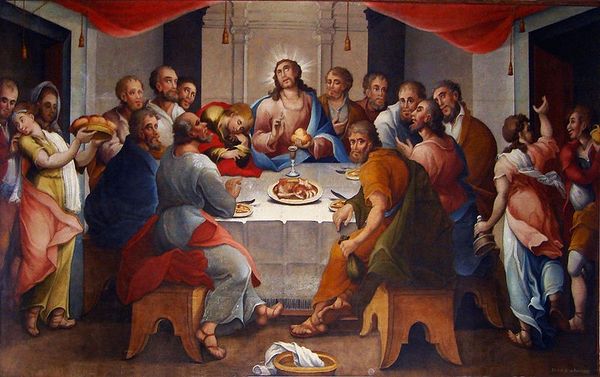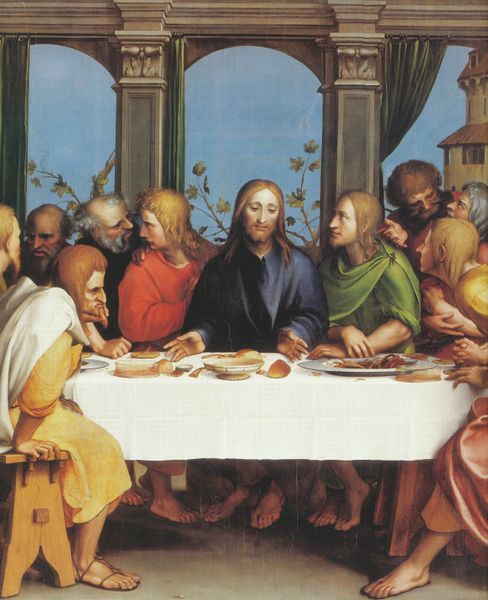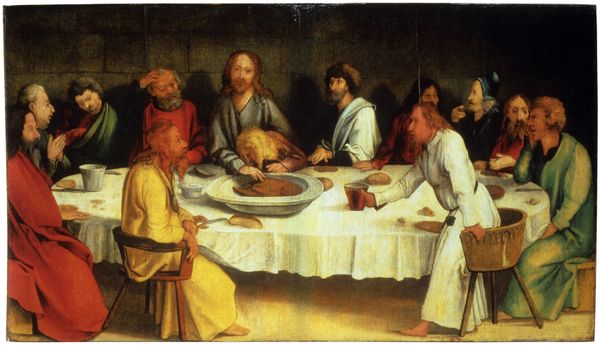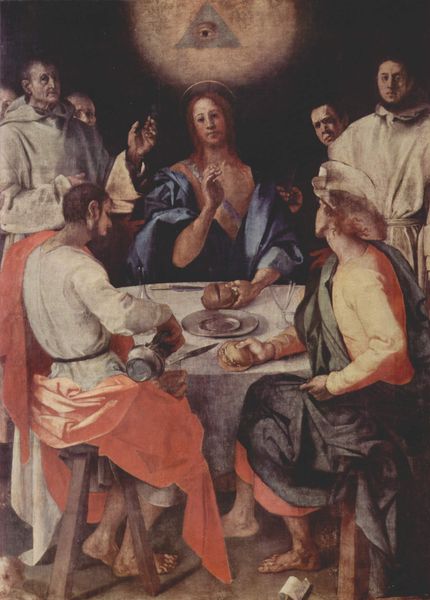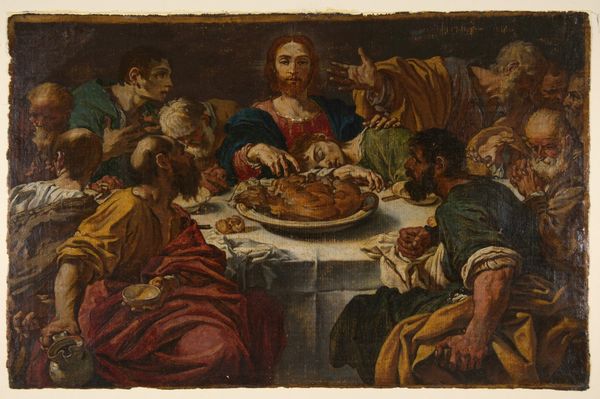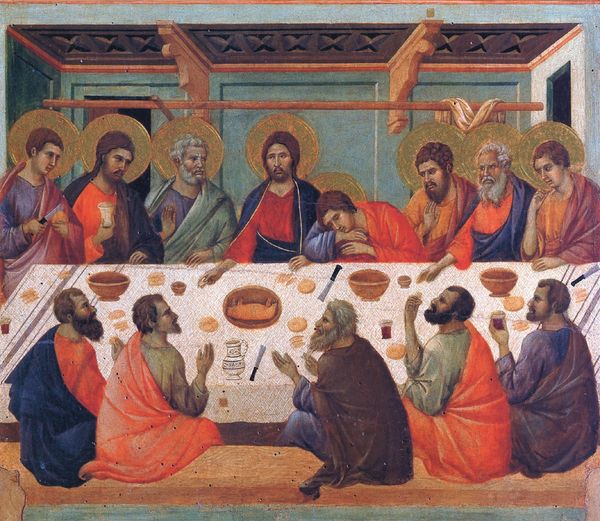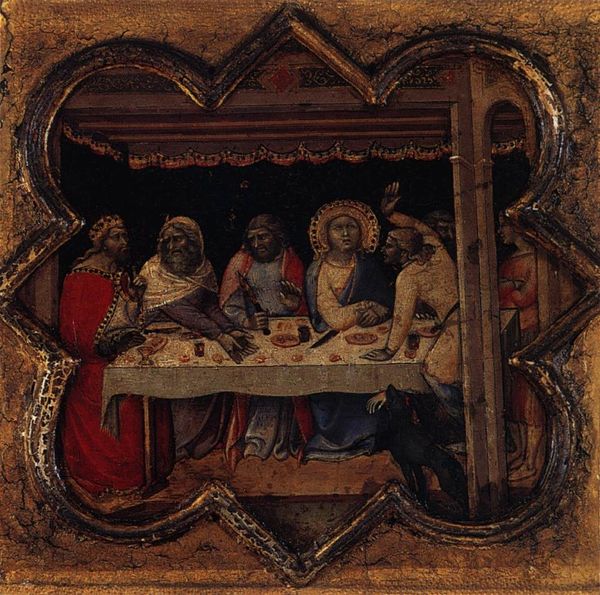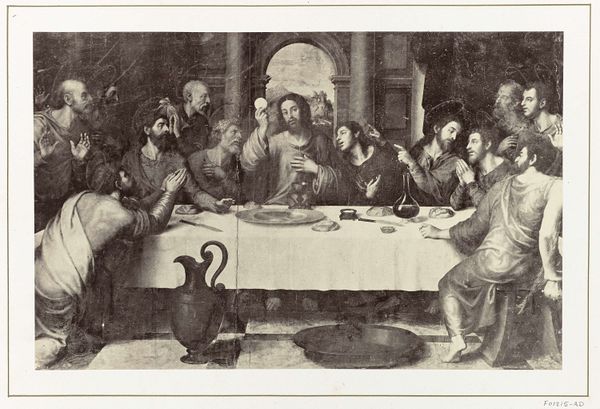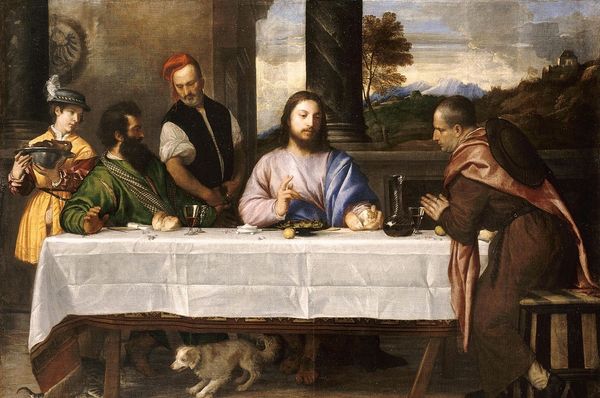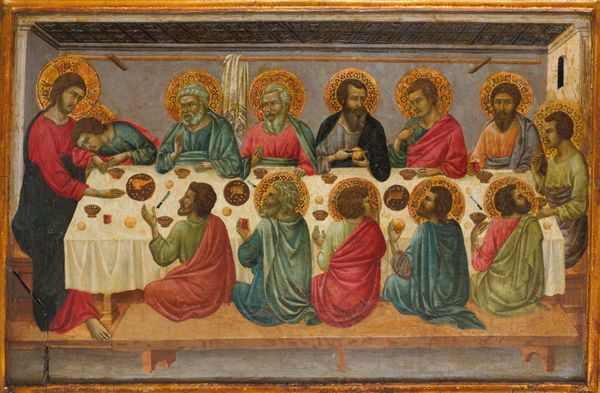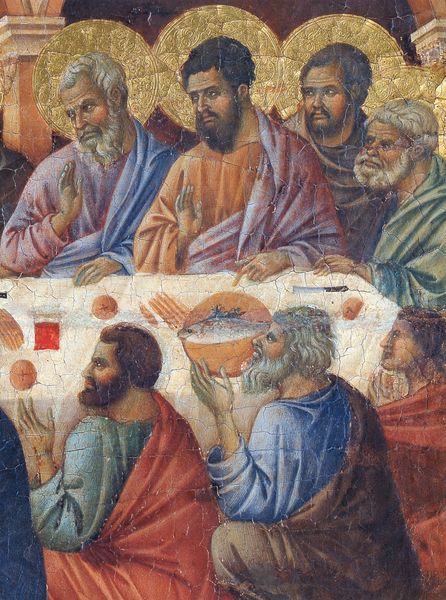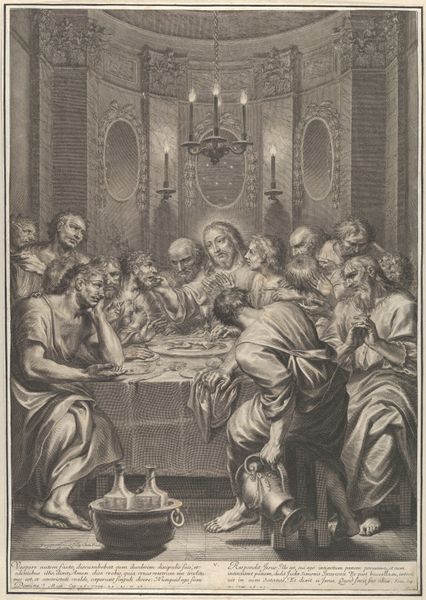
painting, oil-paint
#
portrait
#
baroque
#
painting
#
prophet
#
oil-paint
#
figuration
#
oil painting
#
group-portraits
#
genre-painting
#
history-painting
Copyright: Public domain
Marcos Zapata painted this version of "The Last Supper" in the 18th century, during a time of significant cultural and religious exchange in colonial Peru. Zapata, an indigenous artist, reinterprets a very well known biblical scene through the lens of his own cultural context. While maintaining the traditional representation of Christ and his disciples, the inclusion of local foods offers a glimpse into the negotiations of identity taking place in the Americas. Did you notice that the main dish is a guinea pig? This was a delicacy in the region. The decision to include indigenous cuisine into such a significant Christian scene reflects the complex relationship between the colonizers' religion and local customs. Zapata's "Last Supper" becomes a powerful statement about cultural adaptation and the blending of identities. It invites us to reflect on the ways in which cultures intertwine, creating new and unique interpretations of shared stories.
Comments
No comments
Be the first to comment and join the conversation on the ultimate creative platform.
